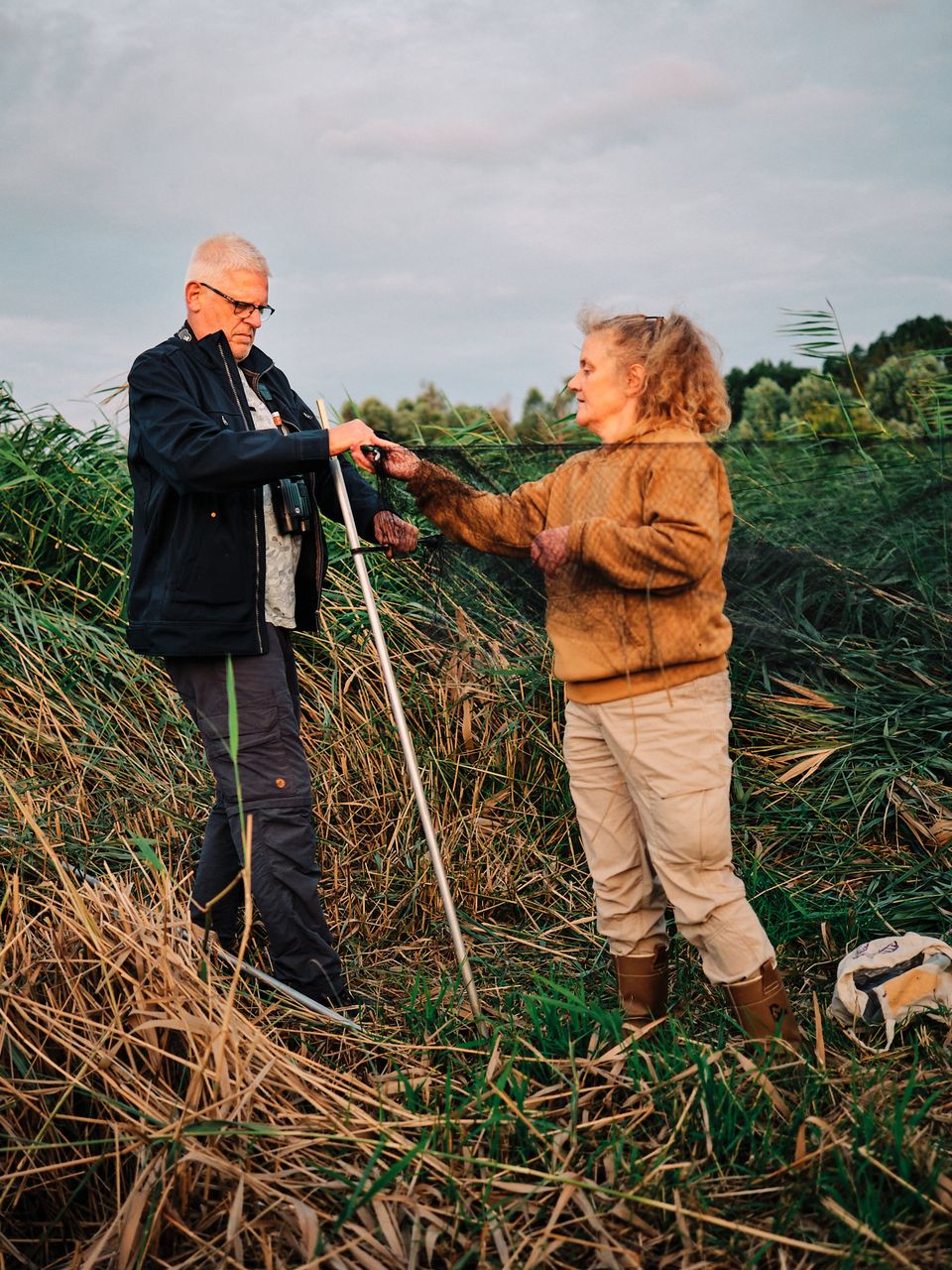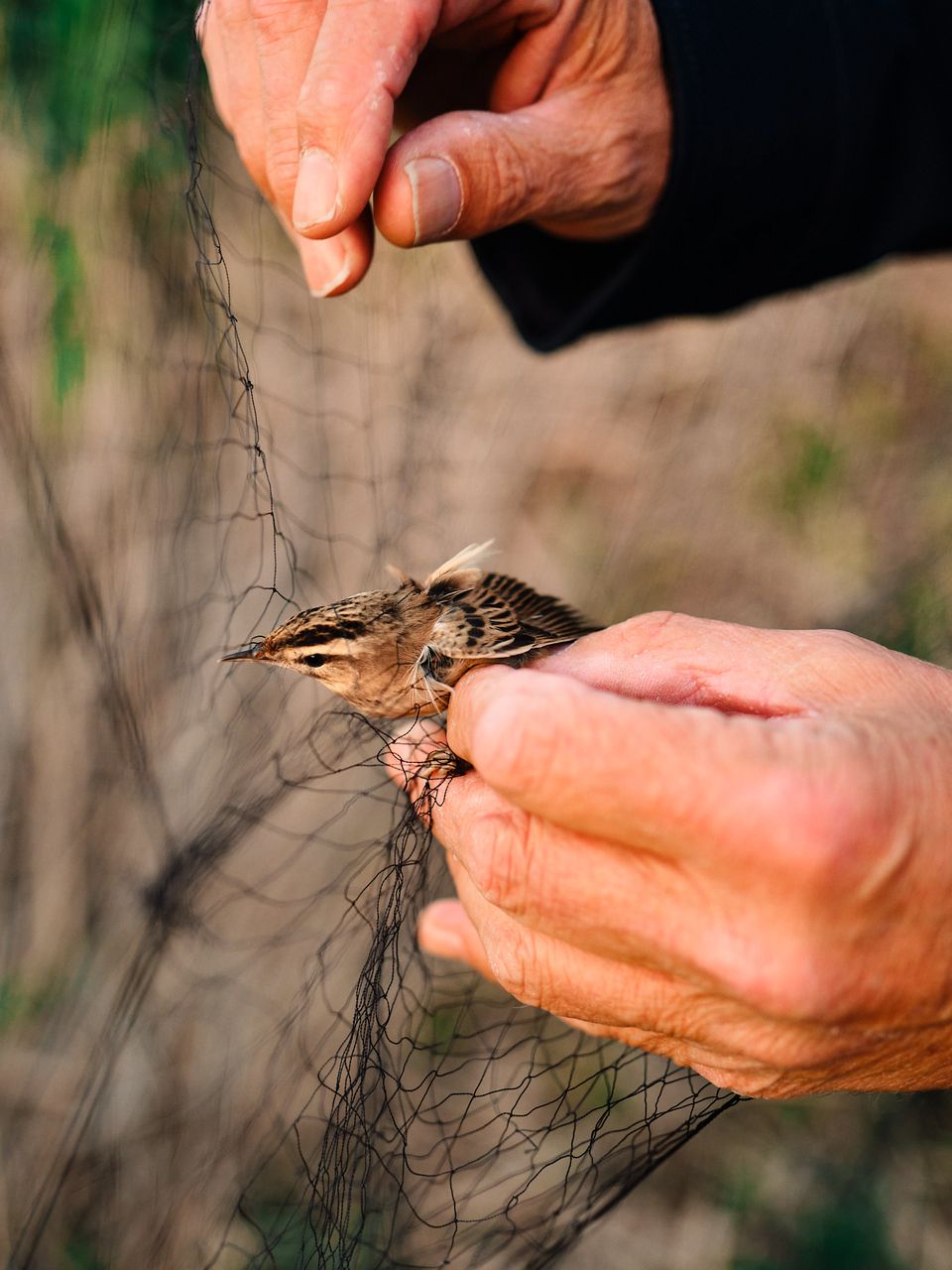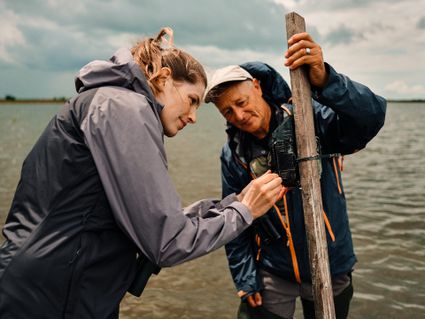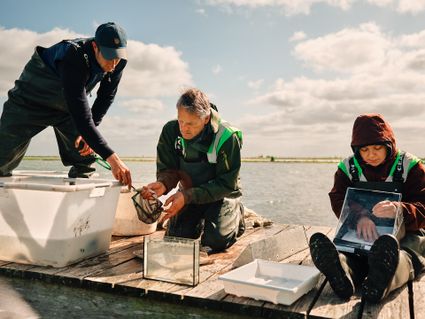Population research of songbirds - Bird researcher Ton Eggenhuizen examines the bird populations of our national parks
'I ring everything with legs and feathers,' laughs bird expert and urban ecologist Ton Eggenhuizen. From goldfinches, warblers and robins to a rare ruddy fantail, Ton has owned them all once. "But I've also examined a neighbor's chicken that ended up in my garden by accident. Together with a team of researchers and volunteers from the Stichting Vogel- en Natuurwacht Flevoland, he works on 'population research' of songbirds in the connecting zone between Oostvaardersplassen and Lepelaarplassen, part of National Park Nieuw Land.
'My very first experience with ringing began with the discovery of a dead, ringed eider duck on Terschelling, sometime around 1972. She had a small ring on her leg. The ringing turned out to have been done by the famous researcher Kees Swennen. It brought with it a story, because this particular bird was already several years old and had been ringed at a different location. My perspective changed: instead of just a random bird, this was an individual with an entire history and journey behind him. For me, it was the start of a lifelong fascination.

“ Every now and then we come across something very special in the nets. ”
Dynamics of bird populations
'In this special area between Oostvaardersplassen and Lepelaarplassen, we set up a place where we catch and ring songbirds. This fits into a larger picture of national and even European research into the dynamics of bird populations. We can not only determine which birds breed in a particular area, but also observe the changes in this population. Some species increase, others decrease, and some remain stable. But the cause of this is often still unclear. By catching birds, marking them, releasing them and collecting all this data, we can better understand how many young birds are born, how migration and emigration occur, and what the chances of survival are," Ton explains.

100 birds a day
'We catch the birds with nylon nets,' Ton explains. 'We set these up between bushes. When birds want to fly from one bush to another, they collide with the nets and roll down into a bag. Taking the birds out requires trained fingers! Birds are fragile and delicate creatures. We cannot and do not want to harm them. And also important: we want to disturb them as little as possible in their natural behavior: if they cannot behave naturally after capture, the research is worthless.' The trapping sessions take place on weekends, and volunteers and researchers walk along the nets every half hour. This happens in the morning starting an hour before sunrise, which can be quite early, especially in summer. On a good day, Ton and his colleagues catch about 100 birds. Each year there are about 3,000.

Blood and feathers
Once the birds are captured, they are checked and ringed on site. Then they are immediately released. Ton: "We measure all kinds of aspects, such as age, sex, weight and condition. In addition to ringing research, we are also conducting a study in cooperation with Erasmus University and Leiden University on zoonoses, diseases that can pass from animals to humans. We take samples of birds to find out what viruses are circulating among bird populations. We even go so far as to catch mosquitoes, to investigate what viruses they carry and can transmit to humans. This involves collecting materials, such as blood samples and smears, which are then sent to laboratories for analysis. And if the bird drops a feather, we send that along, too. All these efforts contribute to our understanding of disease transmission between animals and humans and help develop preventive measures.

Special guests
Although the research has been ongoing since 2007, there is no end in sight for the time being. 'This is really about finger-to-the-wrist research,' Ton explains. 'It's especially interesting to see how bird populations are growing. Take for example the cetti's warbler, a small, brown songbird that used to be rare in the Netherlands. We caught one for the first time in 2015, which was an exciting moment. Now we catch a cetti's warbler almost every time we do surveys, sometimes more than a hundred a year. The goldfinch, once rare, we are now also seeing an increase. This beautiful creature lives in coniferous and mixed forests but now also breeds in bramble thickets. It is extraordinary to see that the bullfinch is adapting and choosing a different habitat. Other native species, for example the wood warbler and the reed warbler, we see less now. Every now and then we come across something very special in the nets: a ruddy fantail for example, very rare bird in the Netherlands. A conspicuous creature, very light with a reddish-brown, long tail, which constantly wags up. It normally lives in dry areas around the Mediterranean Sea and the Middle East. '

A paradise
'The marsh area between Oostvaarders and Lepelaarplassen is a paradise for animals. It is an enclosed piece of rugged nature with reeds, willows and water channels. This area is also home to ringed snakes otters and beavers. Although it is often still night when we leave for the trapping sessions, I enjoy the mornings in the National Park. When the sun rises and nature awakens, the day is at its most beautiful. Nature and the birds have stolen my heart. It's hard work in the field, but the rewards are always great.

Tip from Ton
Found a ringed bird or just a bird ring? Take a picture of it and visit the website of Vogeltrekstation. Here you can enter all the details of the ring. You contribute to important research and you get to see all the information about your find.
Visit vogeltrekstation.nl





